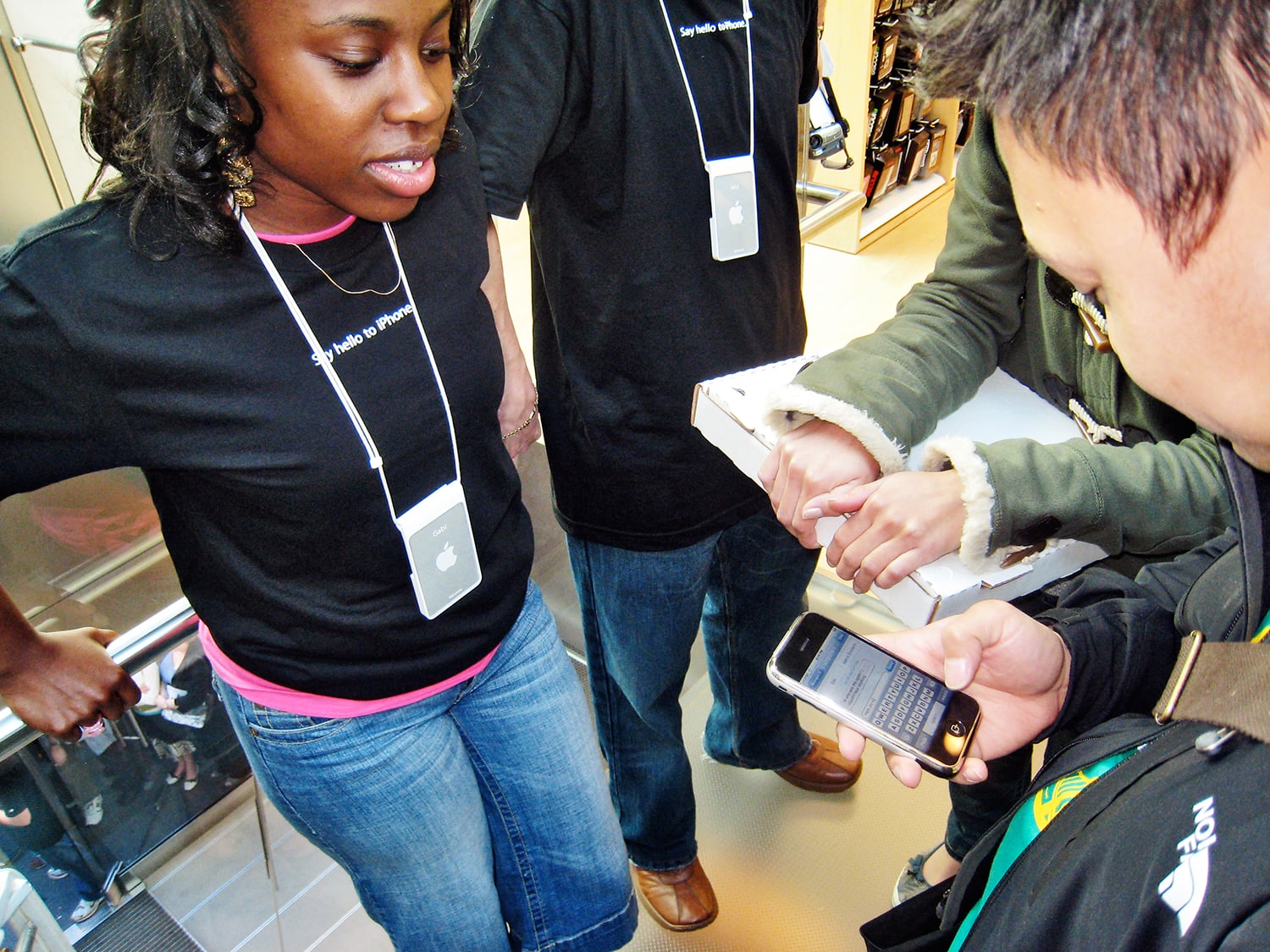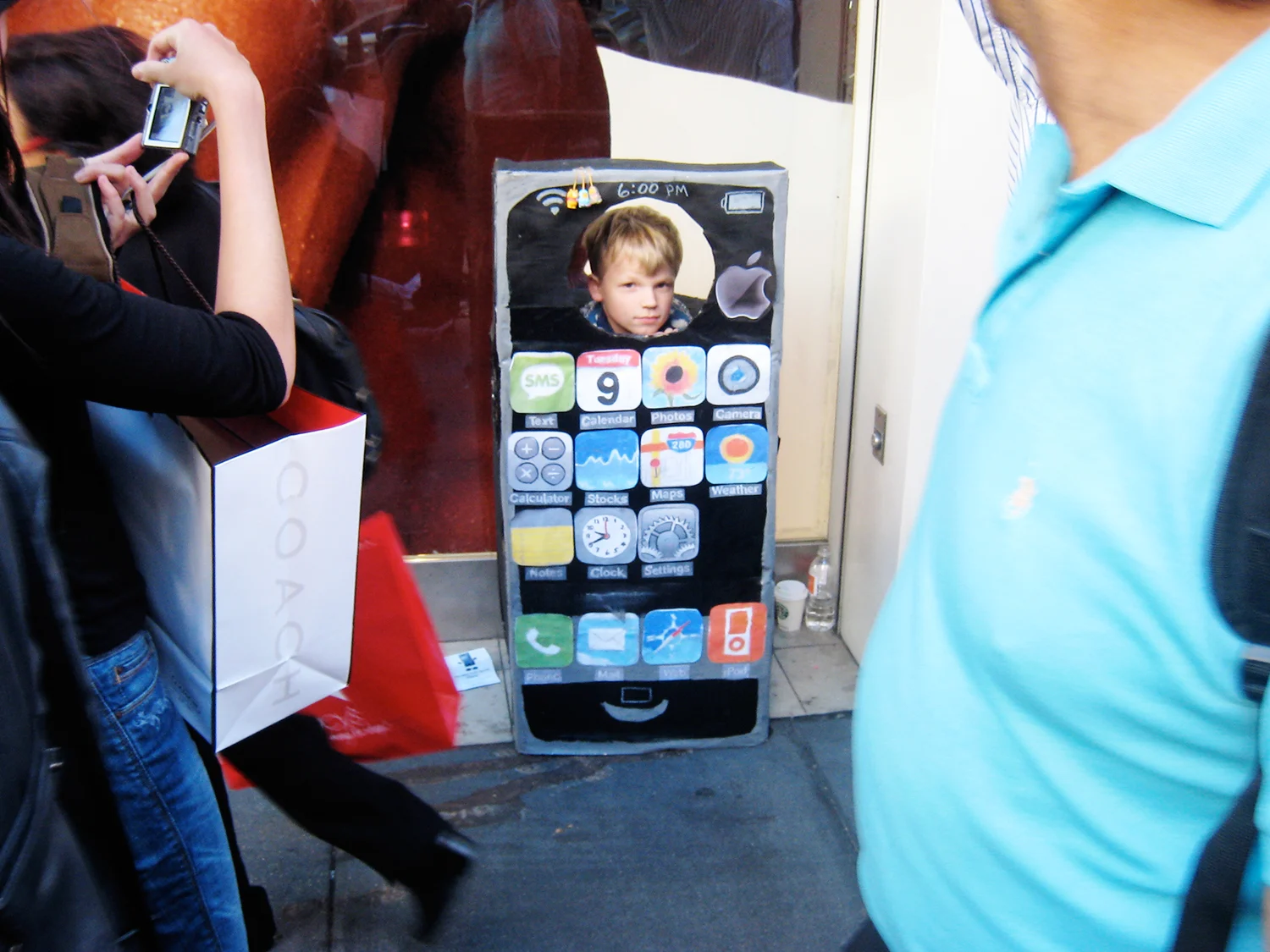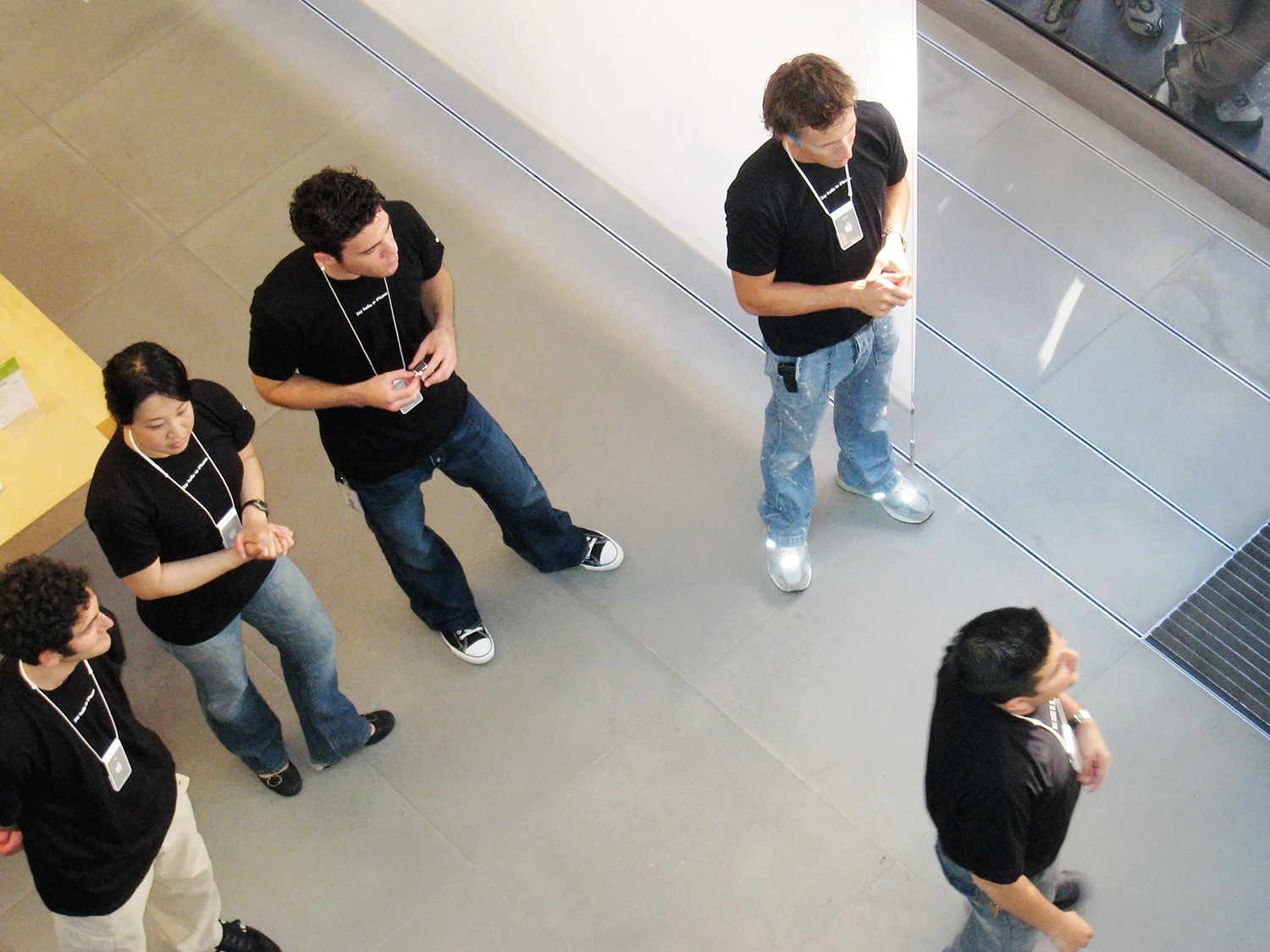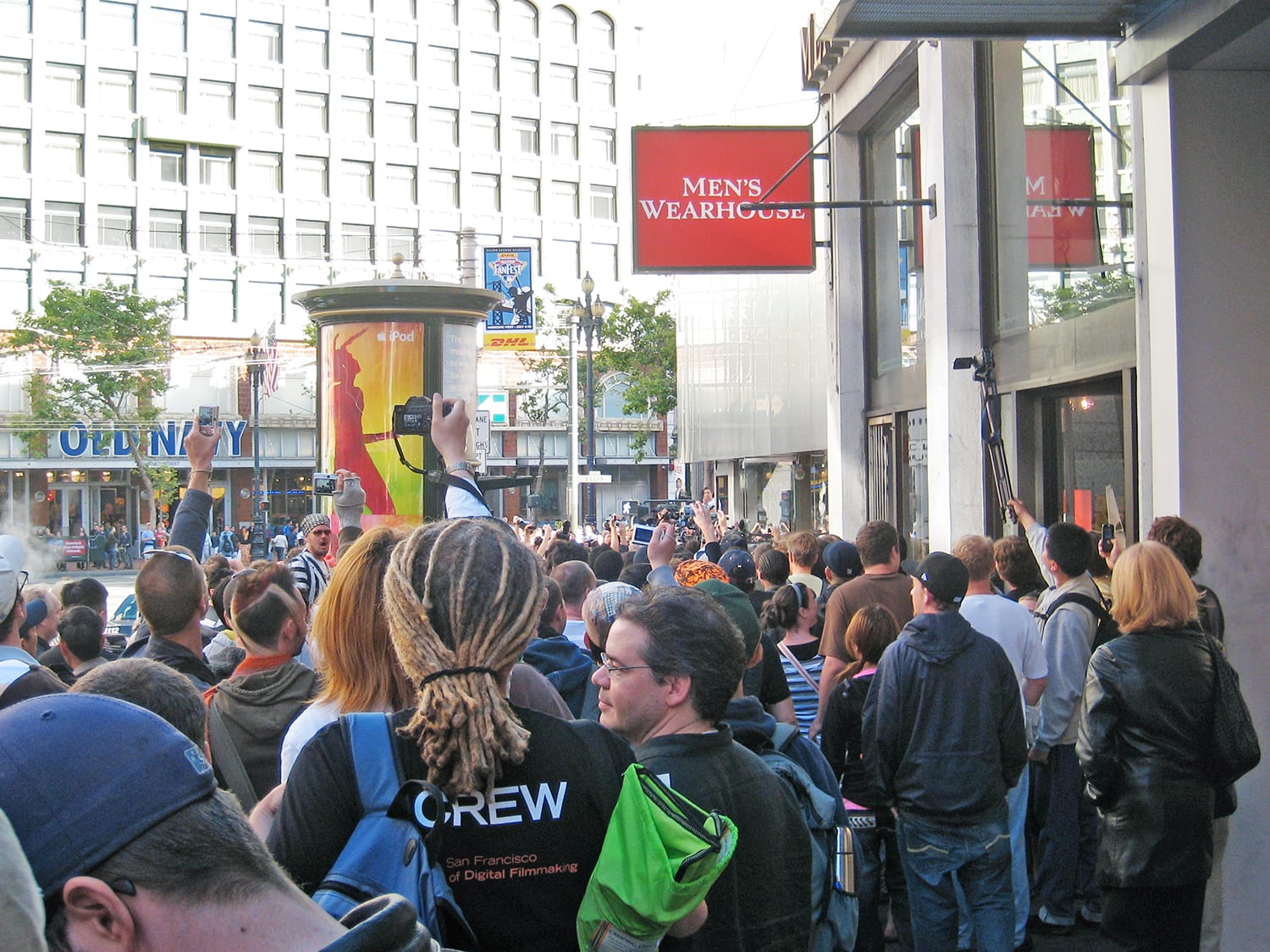On Friday, June 29, 2007, I got up extra-early and headed to the Stonestown Galleria shopping center in San Francisco. By 7:20 a.m., there was already a sizable line of people waiting to buy the first iPhone, which wouldn’t go on sale until 6 p.m. that night at the Apple Store inside the mall.
I queued up–which actually involved sitting on the pavement near the entrance–but later left to join the far longer line at the flagship Apple Store in downtown San Francisco, where the mood was part block party, part circus, and part Event of Historical Significance. (TV reporters were pulling individuals out of line for interviews.) After hours more waiting, I reached the front, entered the store, and climbed its glass staircase to the checkout area on the second floor, as Apple employees in commemorative T-shirts cheered the first people to purchase iPhones. It felt like I was ascending to some sort of heavenly kingdom of eternal consumerism.
And then, after I’d left, I learned that the line had petered out and it was possible to saunter into the store and be a day-one iPhone buyer with hardly any effort at all.
I did all this as a reporter for my employer at the time, PC World, and blogged about the experience. (I bought and expensed the iPhone so we could review it; I didn’t purchase one for myself until a year later, when the first 3G model came along.) I knew I was experiencing something odd and remarkable. I did not, however, realize that it would set a standard for irrationally exuberant excitement over a consumer product that would seem untoppable a decade later.
(I continued to cover the “iLines” for Apple product launches for several years after the first iPhone’s debut–when I arrived at the Stonestown Galleria at 5:30 a.m. to buy an iPad in 2010, I met a man who had been there since 4 a.m.–but by 2011 I was struck by the uneventfulness of the much-awaited Verizon iPhone’s arrival at retail.)
2007’s iPhone mania certainly had its precedents. Cabbage Patch Kids and Tickle Me Elmo instigated shopping frenzies that seem even more inexplicable in retrospect than they did at the time; people really did show up at CompUSA at midnight in 1995 to buy Windows 95. But no previous such phenomenon was as artfully manufactured as what Apple created. And any company that aspires to pull off something similar today would need to recreate an alchemy whose formula may have been lost to time.
Here’s why:
It would have to be an obviously epoch-shifting product. The first iPhone was clearly a great leap forward in a category–cell phones–that vast numbers of people already knew they were interested in. That’s a surprisingly rare occurrence in gadget history. It’s tough to imagine any new phone being as big a departure from what came before as the 2007 iPhone was–and even harder to think of new types of gadgets that could equal the hypnotic effect of the first iPhone.
It would need an iPhone-like build-up. Nearly six months elapsed between Steve Jobs’s unveiling of the iPhone on January 9, 2007 and the moment you and I could buy one. It’s a tribute to the device’s allure and Apple’s marketing prowess that the gap actually intensified consumer interest in the iPhone. People might have lost interest in a lesser gizmo in the interim.
Only Apple has Apple Stores. Their magnetic attraction to consumers was an ingredient in iPhone mania that, say, Samsung could not call on even if it had a phone that was dramatically more exciting than an iPhone. And for years, one of the most efficient ways to get a new iPhone has been to buy it from one of the major wireless carriers’ stores, which live outside of Apple’s reality-distortion field.
The hype machine would have to be set at 11. Apple mastered the marketing of technology products early in its history and remains its grand master, but its single greatest run of success may have been the decade that kicked off with the introduction of the first iPod in 2001. I’m not sure if the current Apple could whip up so much hoopla to such a potent effect, no matter what it was selling. I’m pretty confident no other tech company could.
Lining up would have to be mandatory. Apple only started taking online orders for the first iPhone at the same time it went on sale in stores. In later years, preorders became the norm, and it was possible to become one of the first people to get an iPhone from the comfort of your own home. An explosion of online orders isn’t as compelling a phenomenon as one that involves people descending upon retail establishments, even if the volume of purchases is identical. And by the launch of the first Apple Watch in 2015, Apple marketing honcho Angela Ahrendts explicitly decided she didn’t want lines outside stores and put a reservation-only buying system into effect.
People will continue to get giddy about interesting new products, as nearly a quarter-million folks did last year when they put down $1,000 deposits on Tesla Model 3 cars based on pre-announcement mystique and an Elon Musk event that did not come close to being a full reveal. But iPhone mania was a product of its time–and if some other gadget ever matches its fervor, it will likely do it in an altogether different way.
Recognize your brand’s excellence by applying to this year’s Brands That Matter Awards before the early-rate deadline, May 3.





